Backflush accounting is employed where the overall business cycle time is relatively short and inventory levels are low. Employees across various departments, including production, accounting, and inventory management, need to understand the principles and practices of backflush costing. Conducting comprehensive training sessions ensures that everyone is on the same page and can effectively contribute to the system’s success. This collaborative approach helps in identifying potential issues early and addressing them before they become significant problems. Once the assessment is complete, the next phase involves setting up the necessary infrastructure to support backflush costing. This includes configuring the accounting software to handle the unique requirements of this method.
Managing Inventory Loss and Write-Downs for Financial Stability
It is because costs are still recorded relatively close to the day they are incurred. Companies with slow inventory turnover tend to record costs as they are incurred, as the product may remain unsold for a longer duration of time. A business would like to use backflush accounting for recording the costs of manufacturing a new model of speaker.
Backflush Costing Definition Becker
- Several conditions are required before a business can reliably use backflush costing.
- Development of more sophisticated computer scanning of inventory has allowed regular use of perpetual inventory systems by companies.
- Backflush costing (or delayed costing) is a cost system that works backward from the final product to apply manufacturing costs.
- While it offers advantages in terms of simplicity and time efficiency, careful consideration of trigger points and potential accuracy challenges is essential for successful implementation.
- In JIT environments, this method reduces waste and keeps inventory levels minimal.
Backflush costing can be easier and more economical because businesses do not have to report each expense as it occurs. This type of costing is most common in a just-in-time inventory environment. This streamlined expense recording boosts overall process optimization – making every second and every penny count even more. The next topic explores how backflush costing helps save both money and time. As an example, suppose there is a manufacturing company that produces a product for $10 per unit. This explanation covers the definition, workings, examples, benefits, and considerations related to backflush accounting, aiming to provide a comprehensive understanding in easy-to-understand language.
Backflush CostingDefined with Examples & Entries
- The standard cost can vary from reality and may need to be reconciled in future accounting entries.
- In conclusion, Backflush Accounting offers a streamlined approach to inventory costing and management, particularly beneficial for organizations seeking efficiency and cost-effectiveness in production operations.
- The steps in backflush costing involve identifying trigger points, calculating total production costs (including direct materials, direct labor, and overhead costs), and assigning these costs at the predetermined trigger points.
- A periodic inventory system does not require day-to-day tracking of physical inventory.
- For example, from acquiring raw materials (like diodes, circuits, housing) to the final assembly.
Many modern enterprise resource planning (ERP) systems, such as SAP or Oracle, offer modules specifically designed for backflush costing. These tools can automate much of the process, reducing the manual effort required and ensuring accuracy in cost recording. Usually, the costs of products are calculated during various stages of the production cycle. By eliminating work-in-process (WIP) accounts, backflush costing is designed to simplify the accounting process and save businesses money.
Under the backflush costing method, raw materials are ordered only when required, and they are accounted for. Under the conventional costing method, labor and overhead are charged directly into WIP; then, they are moved to sequential processing, finished goods, and later to the costs of goods sold. In the backflush costing method, these charges are directed into finished goods inventory or costs of goods sold. Under the backflush costing method, raw materials are ordered only when they are required, and they are accounted for. Under the conventional costing method, labor and overhead are charged direct into WIP; then, they are moved to sequential processing that is finished goods and later to the costs of goods sold.
Does backflush costing work well with all types of inventory systems?
However, it can be more time-consuming and complex, especially in environments where rapid decision-making is essential. Implementing backflush costing requires a strategic approach that begins with a thorough assessment of the current production and accounting systems. Companies must first ensure that their operations are compatible with just-in-time (JIT) principles, as backflush costing is most effective in environments with minimal inventory and short production cycles.
Intrinsic Value of a Stock: What It Is and Formulas to Calculate It
This method relies on accurate production records to ensure alignment with actual consumption. The backflush costing method is a simplified method of recording expenses incurred in manufacturing products where all costs incurred are accounted for after some time of their incurrence. This can be used in a hybrid system where multiple methods of production accounting are used.
Average costing accumulates costs and divides them by the number of units produced, leading to a cost per unit that fluctuates with production levels. On the other hand, standard costing sets predetermined costs for materials, labor, and overhead, aiming for consistency and variance analysis. Traditional costing methods often result in a detailed breakdown of inventory categories, including raw materials, work-in-progress, and finished goods. In contrast, backflush costing consolidates these categories, reflecting a more backflush costing aggregated view of inventory. This can make the balance sheet easier to read and understand, providing a clearer picture of a company’s financial health.

